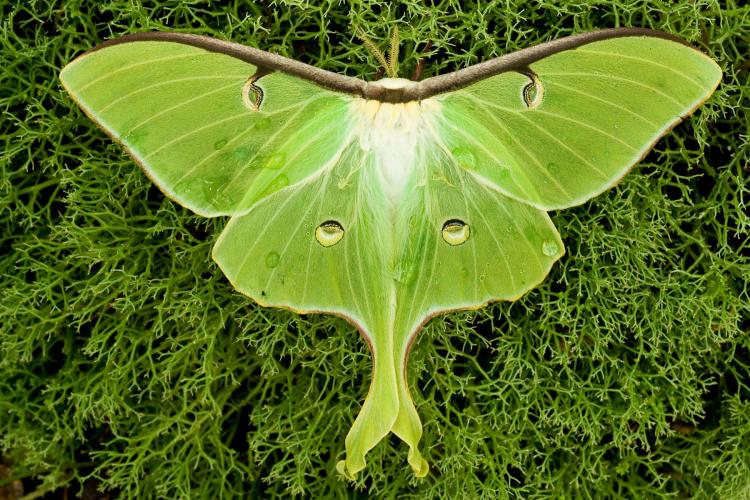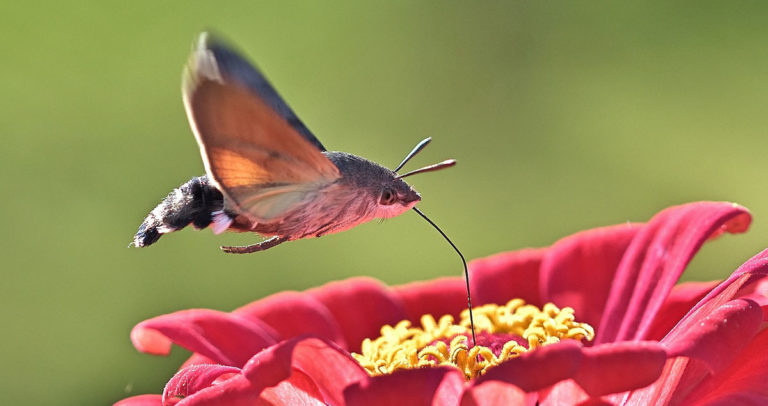Luna Moths in Georgia: Facts, Habitat, and Life Cycle
Georgia is home to a variety of unique and fascinating wildlife, including the beautiful Luna moth. These large, green moths are a sight to behold, with a wingspan of up to 4.5 inches and striking, crescent-shaped markings on their wings. Luna moths are found throughout the eastern United States, but are particularly common in Georgia due to the state’s warm, humid climate.
Despite their impressive size and striking appearance, Luna moths are actually quite elusive. They are primarily active at night, and spend most of their short adult lives searching for a mate. Luna moths have a lifespan of only about one week, during which time they do not eat or drink. Instead, they rely on the energy stored in their bodies as caterpillars to fuel their brief adult lives.
Appearance
Luna moths are one of the largest and most beautiful moths in North America. They are typically found in the eastern United States, including Georgia, and are known for their distinctive lime-green color and long tails. The wingspan of a Luna moth can range from 3 to 4.5 inches, making them quite impressive to see in flight.
The wings of a Luna moth are a pale green color, with a white crescent-shaped mark on each forewing. The hindwings have long tails that can measure up to 4 inches in length. The body of the moth is covered in fine hairs and is a pale green color, matching the wings.
One interesting fact about Luna moths is that they do not have mouths. They do not eat or drink during their adult stage, which lasts only about one week. Instead, they rely on the energy stored from their caterpillar stage to mate and reproduce.
Overall, Luna moths are a stunning sight to see in the wild. Their unique color and long tails make them easily recognizable, and their short adult lifespan makes spotting one all the more special.
Habitat and Range
Luna moths are found throughout the eastern United States, including Georgia. They prefer deciduous forests, where they can lay their eggs on the leaves of hardwood trees such as birch, hickory, and walnut. The larvae feed on these leaves, and then spin cocoons in which they pupate and eventually emerge as adult moths.
In Georgia, Luna moths can be found in a variety of habitats, including urban and suburban areas with mature trees, parks, and forests. They are most commonly seen in the spring, when adults emerge from their cocoons and begin to mate and lay eggs.
While Luna moths are not considered endangered, their populations have declined in some areas due to habitat loss and pesticide use. It is important to protect their habitat by preserving forests and reducing the use of harmful chemicals.
Here are some key features of Luna moth habitat:
- Deciduous forests with hardwood trees such as birch, hickory, and walnut
- Urban and suburban areas with mature trees
- Parks and other green spaces with trees
Here are some ways to help protect Luna moth habitat:
- Plant native trees and shrubs in your yard or community
- Avoid using pesticides and other harmful chemicals
- Support conservation efforts to preserve forests and other natural habitats
Life Cycle
Luna moths undergo a complete metamorphosis, meaning they go through four distinct stages: egg, larva, pupa, and adult. The length of each stage can vary depending on factors such as temperature and food availability.
The female Luna moth lays her eggs on the underside of leaves of the host plant, which can include various species of trees such as hickory, walnut, and sweetgum. The eggs hatch in about a week, and the larvae emerge.
The Luna moth larvae are green and have a voracious appetite. They feed on the leaves of the host plant and molt several times as they grow. The larvae can take anywhere from 4-6 weeks to reach full size, at which point they are about 3 inches long.
After the final molt, the Luna moth pupates. The pupa is wrapped in a cocoon made of silk and leaves, which provides protection during the vulnerable stage of metamorphosis. The pupal stage lasts for about two weeks, after which the adult Luna moth emerges.
The adult Luna moth does not have a functional mouth and does not feed. Its sole purpose is to mate and lay eggs. The adult Luna moth is easily recognizable by its large size and distinctive green wings with long tails. The Luna moth adult lifespan is short, lasting only about a week.
Threats and Conservation
Luna moths in Georgia face several threats to their survival. One of the primary threats is habitat loss due to deforestation and urbanization. As forests are cleared for development, the moths lose their natural habitat and food sources. Additionally, light pollution from urban areas can disorient the moths, making it difficult for them to navigate and find mates.
Another threat to Luna moths is the use of pesticides and other chemicals. These chemicals can kill the moths directly or indirectly by destroying their food sources or habitat. Climate change is also a concern, as rising temperatures and changing weather patterns can negatively impact the moths and their habitat.
Despite these threats, there are efforts underway to conserve Luna moths in Georgia. One important conservation strategy is the protection of natural habitats through land preservation and restoration efforts. This includes efforts to restore degraded forests and create corridors of habitat to connect fragmented areas.
Education and outreach programs are also important for increasing public awareness about the importance of Luna moths and their habitat. These programs can help reduce the use of harmful chemicals and promote conservation efforts.
Finally, citizen science initiatives are helping to collect data on Luna moth populations and distribution. This information can be used to inform conservation efforts and track the success of conservation strategies over time.
Interesting Facts
Georgia is home to many fascinating species of moths, but one of the most interesting is the Luna moth. Here are some interesting facts about this beautiful creature:
- The Luna moth is one of the largest moths in North America, with a wingspan of up to 4.5 inches.
- Despite their large size, Luna moths only live for about a week as adults. During this time, they do not eat and focus solely on mating.
- Male and female Luna moths are easy to tell apart. Males have larger, bushier antennae, while females have smaller, more feathery antennae.
- The Luna moth is named after the Roman goddess of the moon, Luna, because of its pale green color and crescent-shaped markings on its wings.
- Luna moths are not harmful to humans or plants. In fact, they are an important part of the ecosystem as they serve as a food source for birds and other animals.
If you’re lucky enough to spot a Luna moth in Georgia, take a moment to appreciate its beauty and importance in the natural world.


